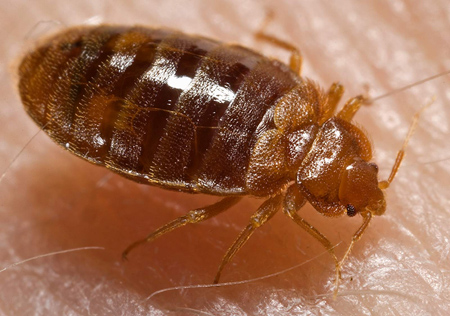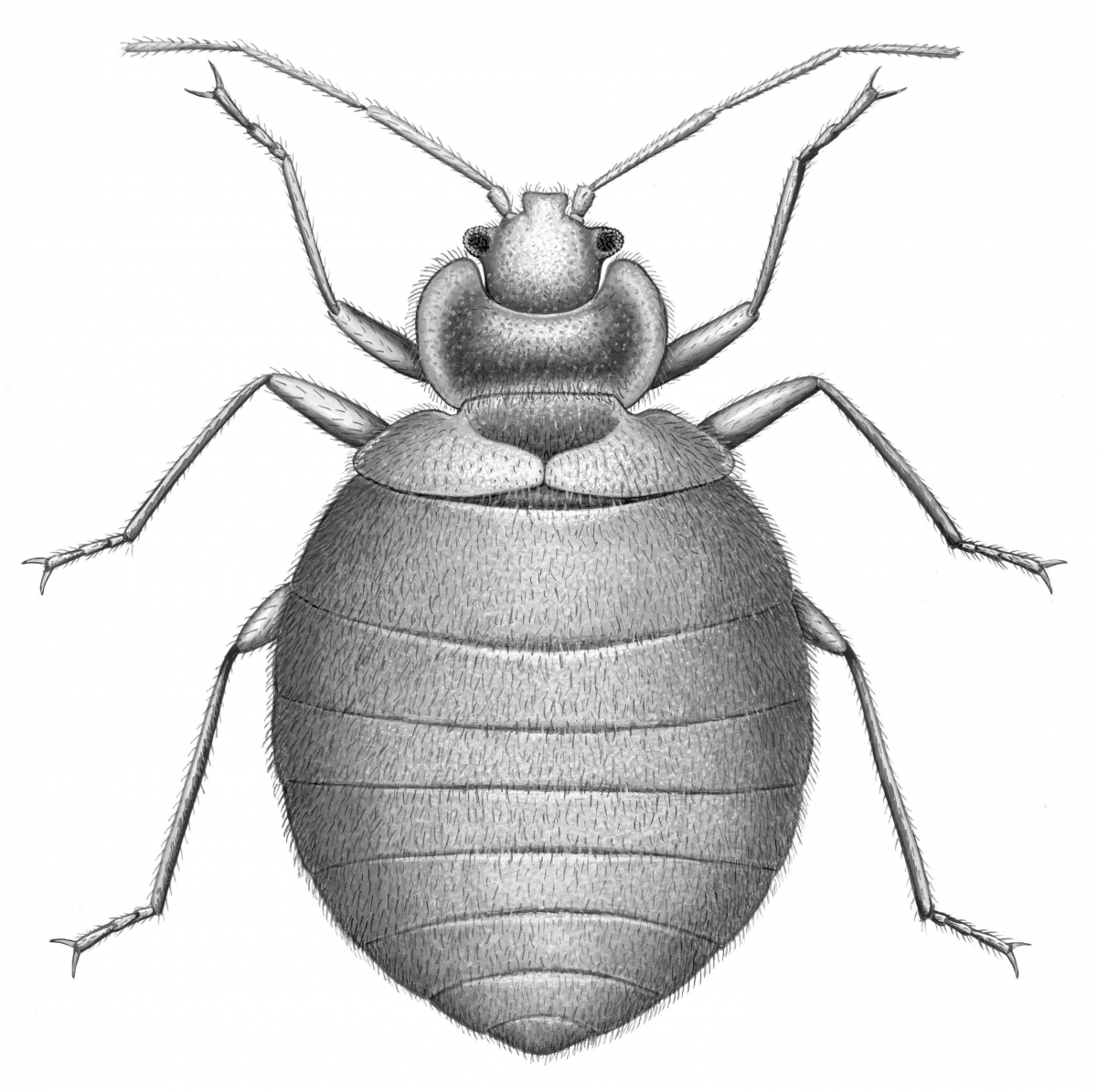I think I have bedbugs, what should I do?
Published
Categories
Blog Post
(Cimex lectularius) since the early 2000s, has resulted in heightened concern from people who find insects in their home. “Is it a bed bug?” is a common question posed to ROM entomologists. It may be helpful to know that there are many types of insects found in homes and most of them are not bed bugs!
Never seen one? This is what a bed bug looks like.

Photograph of a bed bug feeding on a human volunteer. Photo by: Piotr Naskrecki

Illustration of a bed bug. Copyright ROM.
As you can see, bed bugs are reddish brown, oval and about the size of an apple seed – large enough to see with the human eye. They have very small wings so they cannot fly and are known to survive for long periods in unoccupied houses without a food source. They are attracted by our odour and body temperature.
Biology
Bed bugs feed on the blood of mammals – including bats and dogs – and birds. The species found in Toronto feeds primarily on humans. During the first stage of development (or instar) bed bugs take about 3 minutes to feed; the adults take between 10-20 minutes. Male and female bed bugs moult five times during their lifetime – they shed their skin as they outgrow their exoskeleton and must feed beforehand.
Feeding
Bed bugs have piercing mouth parts which break the skin during feeding. The process is painless and they will often go unnoticed by the host. Not everyone reacts to bed bugs bites – some studies report that 20% of humans are not sensitive to them at all. The individuals that do react will likely develop red, itchy bumps which if scratched can lead to secondary infections.
Bed bugs are mostly active at night but will feed during the day if they are very hungry. They are excellent hitchhikers and will move around during the day by attaching to clothes, climbing into bags and other personal belongings.
Do they carry diseases?
Bedbugs are able to carry disease but there does not seem to be transmission from host to host. For this reason, authorities consider them a nuisance instead of a ‘public health issue’. This information may change in time.
How do I get rid of them?
Depending on whether you are in an apartment unit or a house, contact your landlord, public health or a pest control professional to confirm that you have bed bugs. This is an important first step.
If you do have bed bugs, then start by doing a major clean! It’s your first instinct anyway so go with it. Vacuum all crevices in and around your bed. Wash all sheets, bedding, etc. in hot water and use the dryer. Remove all clutter (including books) from around the bed and freeze it or wash it if you can. Some people have successfully gotten rid of bed bugs on their own, but it is very difficult. Pest control professionals are often required to manage infestations. Throwing out furniture is not usually necessary.
Prevention
Since any one of us could pick up bed bugs and bring them home, here are a few suggestions to avoid getting them in the first place:
- Check beds when you travel. The best way to do this is look under the mattress and around the head board for the insects. Ask for a room change if you find any.
- If you suspect you stayed in a building or room that contained bed bugs, immediately wash all your clothing and carefully inspect your luggage for bed bugs when you return home.
- Don’t pick up used equipment or furniture off the street, especially mattresses!
Other sources of information
Bed Bug Infestations, City of Toronto



